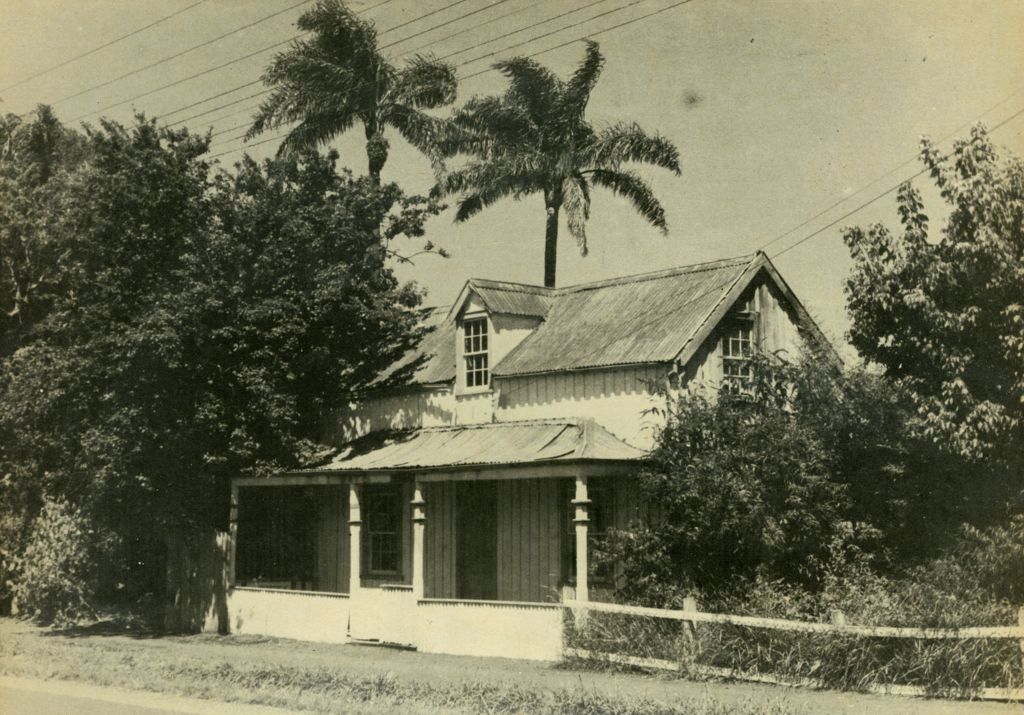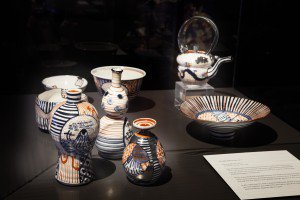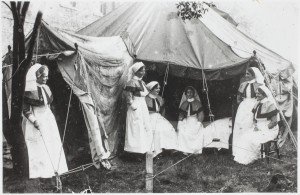Tracing the inhabitants of Wyllie Cottage
While the cottage is closed for renovation we have been researching the inhabitants, and have been surprised by the number of people who have lived there, albeit briefly. As is always the way though, our research has raised as many questions as answers, and we are hoping that some of the names in this blog post will jog people’s memories and help us fill some gaps.
The Wyllie family, who had the cottage built in the first place, were the only owner-occupiers. They moved to the Mangapapa area in 1875 after only a couple of years residence. The Dunlops didn’t purchase the land on which the cottage stood until 1885. The inhabitants in the intervening ten years are unknown, but it seems most unlikely that what was, for the time, a relatively comfortable dwelling, would have been left empty.
The Dunlops relocated the cottage to its present site, and made some structural changes, but they didn’t live in it. From 1886 onwards the cottage was used as a rental property, and no doubt that is why it has remained in a fairly original condition, as neither tenants nor landlords had been prepared to invest in upgrading its facilities. We doubt that it would have survived to the 1970s with no bathroom or indoor toilet if it had been occupied by the people who actually owned it.
Sir Robert Hall wrote in the original cottage information brochure that “Casual information from a donor to the Museum included the item that his father, named Steele, rented the cottage in 1886 and so was probably the first tenant. In the following year he went to Waiapu to be a farm overseer.” Unfortunately Mr Steele made the donations so long ago that he is certainly no longer alive, and we have lost the opportunity to ask him for more details, although it is beginning to seem possible that his father may have been Thomas [Bertie] Greenwood Steele. We have been able to find a T.G. Steele working up the coast in the mid 1890s, so as that part of the story is correct, it is tempting to hope that the rest is too, but of course we would like to be able to prove it.
Information we have received recently is that George and Nellie Cumming lived in the cottage from approximately 1892 – 1896. A Miss Annie Cross arrived from England to stay with them, and was married from the cottage. Papers Past have confirmed that Miss Cross was indeed married at the residence of Mr G.S. Cumming, but as Gisborne was so small in those days, the only address they felt necessary to include was Whataupoko. Annie married Mr Oatridge, a local baker, and there must have been a family connection here, as Mrs Cumming’s maiden name was also Oatridge. We would love to think that there had been a wedding at the cottage, and can only hope that there just might be a photograph tucked away in someone’s family album!
In 1897 Dunlop’s business failed and he was forced to lease Kelvin, the large house which had been built over the original cottage site. It seems that the Dunlops retained the cottage to use as a school, which appears to have been in operation from 1896 to 1898. Although Mrs Dunlop had taught before her marriage, it is hard to say to what extent she was involved with the actual teaching in the cottage, as by 1896 she had five children under the age of 12. So presumably it was in some kind of association with her that Mrs and Miss Watson taught there in 1896. They were joined by a Miss Drummond, and later in the same year Miss Drummond, now apparently minus the Watsons, was joined very briefly by Miss Rees, who then went on to establish her own school.

Wyllie Cottage, 1896, photograph by William F Crawford, collection Tairāwhiti Museum, F429
“By arrangement with Mrs Chas. Dunlop” Miss Glanvill, who had recently arrived from England, continued the school through 1897 and at least some of 1898. In 1899 she married George Tiffen – brother-in-law of W.D. Lysnar, who purchased the Kelvin property, including the cottage, in 1898.
The Evans family stayed in the cottage while their own home being built, and two of the Evans daughters are also supposed to have taught in the cottage – possibly it was again used as a school after the Evans family had moved out. Their stay there was relatively brief, as their own house, named Oakleigh, was the scene of Alice Evans’ wedding in October 1900.
Miss Inez Aylmer also used the cottage as a school, from an unknown date until mid 1903, when she opened a girls’ boarding and day school in Derby Street. The Herald published a list of the prize winners at the 1901 break-up ceremony, and we are hopeful that one of their descendants might be able to provide us with more information. The prize-winners that year were : Margot Rees, Merle Lawless, Greta Simeon, Hawea Rees, Iranui Lunn, Gilbert Ritchie, Elliot Hookey, Allan Muir, Roy Muir, and Dick Simeon. The inclusion of the Simeon children is particularly interesting, as their mother is supposed to have used the cottage as premises for her dressmaking business. But although we have been able to establish that Mrs Simeon was in business as a dressmaker we have not so far been able to find a definite connection to the cottage. All we can say is that in April 1902 she moved into town, “to more central and convenient rooms” – but from where?
So far we have not been able to find who the occupants might have been in the early years of the twentieth century. The cottage may well have been left unoccupied for a while, as according to Sir Robert Hall, in 1899 Lysnar contemplated pulling it down and replacing it with a buggy-house and stable.
In June 1910 Mr Browne’s collie pup went missing, and the advertisement in the Poverty Bay Herald gave the return address as 10 Stout Street (the original cottage number). It seems very likely that this was Harry Leggett Browne, who is listed at this address on the 1911 Electoral Roll. Harry appears on a couple of New Zealand electoral rolls, and then he disappears. However, a Harry Leggett Browne, originally from Wivenhoe in the UK was killed in France in 1917. We have been in touch with the Wivenhoe Historical Society, but have been unable to prove that he is the same person. But given that Leggett Browne is such an unusual name we have speculated he was in New Zealand on some kind of working holiday, and returned to England to enlist after the outbreak of war. If that is the case, he would not be the only inhabitant of the cottage to have been a war casualty : Herbert, the youngest Evans son, was killed in action at the Dardanelles, and one of the Dunlop boys also lost his life at Gallipoli.
But only three days before Browne’s lost puppy advertisement, a Mrs D. Watson placed an advertisement : Wanted – unfurnished room, with board, for working man and boy. Particulars were to be had at 10 Stout Street. Another person who gave his address as 10 Stout Street at around the same time was Leonard Dargie, originally from Australia. He married Ann Darvill (in Gisborne) in 1908, and they had at least two children in New Zealand, before eventually returning to Australia.
Most, if not all, the tenants through the early twentieth century were Lysnar’s employees.
Richard Stevenson came to Gisborne with his family as the result of an arrangement made with Lysnar in London in 1912. Lysnar paid their passage to NZ, and Stevenson undertook to work as groom, gardener and chauffer. The cottage was part of the employment package, and payment for the journey out was to be deducted from his wages.
The Stevenson’s stay in the cottage was also quite short; Mrs Eliza Beatric Mullooly was listed as the occupant in a 1913 directory, and by 1914 the occupant was Arthur Alfred MacLaren, a groom. John Hill, gardener, was there around 1922, and in 1923 the new occupants were Chas and Frances Melton. Elsie, their only daughter, married Leonard Lentell, but we wonder whether she may have previously been engaged to Ben Broadhead, who was killed in action in France in 1918. After she married Lentell, Elsie went to live in New Plymouth, but she returned to Gisborne eventually, as she is buried in the Taruheru Cemetery. Elsie had two daughters, Norma and Doris. I am guessing that the Meltons – or at least Frances – were originally from Liverpool, as she made bequests in her will to two Liverpool institutions.

Wyllie Cottage, 1925 Collection Tairawhiti Museum 232-18
The Hoggins family were in occupation in 1926. Raymond Hoggins was employed as gardener, but this was another short stay. They were followed by the Forsyths, who lived in the cottage until 1930, when Mr Forsyth passed away.
The 1931 earthquake caused damage to many of the chimneys of Lysnar’s rental properties, including the cottage. A letter from his insurance company urged that immediate steps should be taken to have the necessary repairs carried out, and we also learn that the cottage at the time was occupied by “Fanning”.
By 1933 the Depression was causing considerable hardship, a point acknowledged by Mrs Lysnar in her letter to Messrs Ward & Ferrol regarding their overdue rent. Nevertheless, she thought that “With two families living in the house you should have no trouble in keeping the rent paid even though these are hard times.” Clearly there were difficulties of some description, and Mr Ward received a final letter in November, asking him to leave.
Robert Butterworth was there in the mid-1930s, but we don’t know whether he had a family there with him. The last actual family to occupy as far as we know were the Outens, who were there from the later 1930s through to about 1940. We have very little information about any of these people, though we do know that Ernest Outen, Frederick’s son, was killed in World War Two.
Mrs Browne, the longest resident by far, who lived in the cottage for nearly 30 years, also lost a son in World War Two. Iris Gwendoline Maclean was born in Christchurch in 1890. After her family moved to Gisborne her father managed Te-Hau-o-te-Atua for the Bloomfield Brothers. He was prominent in local sporting events until 1910, when he apparently left Gisborne fairly abruptly, and so did not give his daughter away at her 1911 wedding to Charles Fenwick.
Charles died in 1923, and Iris married Robert Browne in 1924. Robert Browne was still alive when Iris returned to Gisborne in 1942, but it appears that he did not accompany her. Given that her mother was by then in her nineties, Iris may well have returned to help care for her – but we may never know what her reasons were. Two years after her return she would have received the news that her son Terence had been killed.
By the mid-1950s – when the ownership of the cottage passed to the Art Society – Mrs Browne was fairly well entrenched, as she resisted several suggestions that she might prefer to move to more salubrious accommodation. Correspondence from the 1950s onwards indicates that the bare minimum was spent on maintenance of the cottage.

Wyllie Cottage, 1965 Collection Tairāwhiti Museum 232-7
Photographs in the Photo News give some indication of its run-down state after Mrs Browne had moved out (though it may have been vandalised in the interim). But some of the photos pose more questions : for instance, what became of the old coal range which, according to the caption was “almost unique in the Gisborne district”? Was she still using that to cook on, or was there some other kind of stove installed as well? We know the toilet was still outside; was the tin bath the same one which had been in need of replacement in 1961? We also wonder whether the meat safe (since removed) was the only food cooling device. As it was installed in the side room and not the kitchen, we also wonder what that room was actually used for.
Now that the previous displays have been removed and the barriers in the doors taken away we have been able to go into the rooms, and although we knew the rooms were small, it is not until you are actually standing in them that you really appreciate their scale. Following this renovation visitors to the cottage will also be able to experience this for themselves, as the decision has been made to keep all the rooms open. The doors to the rooms have been replaced, and the cottage will be the closest to the bare bones of the 1886 appearance than it has been at any time since then. The paint colours are based on the paint sampling which has been done throughout the cottage. People may well find that it looks rather monochromatic. But interior painting at that time was for functional rather than decorative purposes, and the range of colours available was fairly limited. One batch of paint could be used to paint a whole house: walls and ceilings.
Allowing access to the rooms has meant that we have had to completely reconsider the kind of displays we use. Because people will need to be able to leave rooms immediately in the event of an emergency, we will not be able to use any furniture that might impede their quick exit. And although we speak of the cottage as ‘historic’ that is purely because of the length of time it has survived. It is not a historic house in the sense that an important event took place within the walls, or even in terms of it being the long-term residence of one particular family. A surprising number of people have occupied it, but, such is the nature of tenancy rather than ownership, they have left very little behind them. This means that there are very few artefacts which relate directly to the dwelling – indeed, in many ways it makes more sense to view the cottage itself as the artefact. However it is an artefact which not only contains the stories of its inhabitants, but which can act as a viewing point of Gisborne’s history through a period of extraordinary technological change and tumultuous local, national and world events. Any extra information that will help us enrich those stories would be most welcome.
-Christine Page, Tairawhiti Museum archivist and Wyllie Cottage exhibition curator



